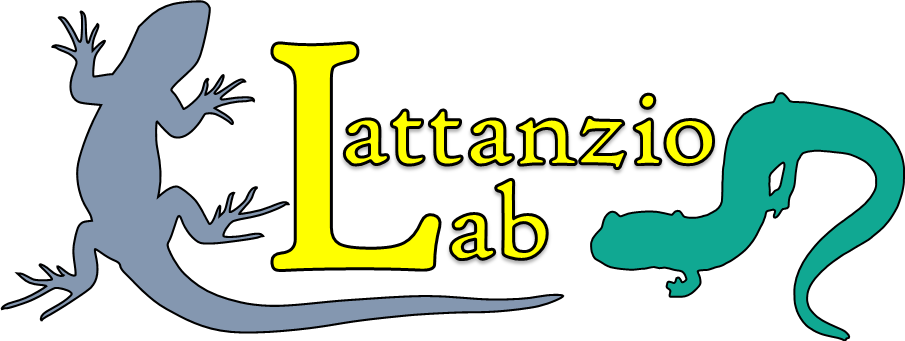Here you can find information on current and upcoming research projects, present and past lab members, and more! Use the menu on the top to navigate. Thanks for stopping by!
Latest Updates
Excited for JMIH 2025!
Our lab is heading to the 2025 Joint Meeting of Ichthyologists and Herpetologists in Ann Arbor, Michigan! Dr. Lattanzio will be presenting new research on how ultraviolet (UV) light exposure affects dominance behavior in tree lizards. Graduate student Ke'alani will be competing in the prestigious Herpetologists' League Graduate Research Award session, highlighting her study on how urbanization alters relationships between morphology, performance, and escape behavior in lizards. Undergraduate Grace will be attending to learn more about scientific communication and network with fellow researchers—great prep for presenting next year!
Conference Website Conference Program🦎 UV Light Behavioral Regulation: A New Frontier in Reptile Ecophysiology 💡
For decades, reptile biology has focused almost entirely on temperature — how reptiles bask in the sun or move between light and shade to stay warm. But what if there's more to the story?
Our lab is exploring a long-overlooked piece of the thermoregulation puzzle: ultraviolet (UV) light exposure. Just like us, reptiles rely on sunlight to produce vitamin D₃. For them, this process is essential for growth, bone development, digestive function, reproductive success, and survival. We already knew from prior work that regulating UV exposure would be beneficial for reptiles, and that they can perceive UV (UV-A wavelengths, which typically occur along with UV-B). Our initial work on lizards is revealing that lizards can actively regulate their exposure to UV!
To study this, we designed, assembled, and programmed the world’s first UV preference logger for lizards (talk about wearable tech!), enabling us to track real-time UV exposure in lab settings. This device allowed us to compare UV and thermal preferences, as well as what happens when lizards have to choose between UV and heat: in effect, UV preferences won out, meaning reptiles might prioritize UV exposure even if it comes with temperature risks.
This work opens some exciting new doors for understanding reptile physiology and ecology , including how they’ll cope with changing climates. It also challenges a century-old assumption that basking is primarily for heat exchange. Since this work I also created a field data logger device, allowing us to begin conducting UV regulation studies in a variety of lizard species.
